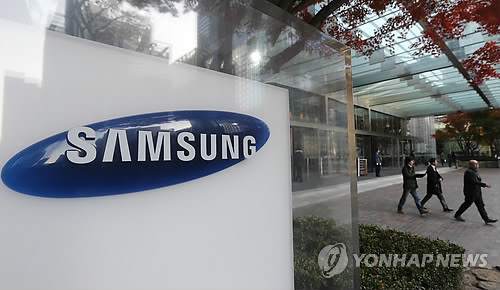Competition to take the lead in standardizing imaging technology in the TV sector intensifies as two groups for different tech standards make all-out marketing efforts to win the race.
The HDR technology improves contrast ratio and color accuracy. In layman’s term, it helps TVs generate brightness and darkness better and display more real-life colors.

Leading the HDR war are the two tech standards -- HDR10, an open-platform standard adopted by a number of firms including Samsung and Dolby Vision, and a technique developed by audio and imaging tech firm Dolby Laboratories.
Even though Dolby is the founding member of the UHD Alliance, which support HDR10, it puts more weight on promoting its own tech standard.
Seoul-headquartered tech giant Samsung Electronics serves as a flag bearer of the HDR10 side, while LG Electronics is conducting joint marketing efforts with the U.S. imaging tech firm for Dolby Vision.
LGE’s high-end TVs support both HDR10 and Dolby Vision, but the Korean TV manufacturer puts more weight on Dolby’s imaging technology, claiming Dolby Vision has competitive edge over its competing technology.
“Dolby Vision has the upper hand in expressing details of blacks and brightness while HDR10 emphasizes brightness only, which sequentially leads to the expression of incomplete blacks,” said Kim Sung-gon of LGE said at a joint press meeting held on the sidelines of the KOBA trade show for broadcast, audio and lighting technology in Seoul held Tuesday.
He added that LGE had adopted Dolby’s imaging technology as it is the best option to display true-to-life colors and assure greater brightness.
While UHD Alliance has a host of TV manufacturers supporting HDR10, including Sony, LGE and Sharp, Dolby has only two TV manufacturers -- LGE and VIZIO of the U.S. -- on its side.
Despite being outnumbered, the Dolby coalition said it has gained traction as it has won more allies across various industrial sectors recently, according to the U.S. firm.
“The momentum and excitement we are seeing from display manufacturers and across some of those companies that I had mentioned is indicative of the fact that we do have the best solution today,” said Mike Chao, regional vice president of Dolby’s Asia-Pacific office.
He said Chinese TV-makers TCL and Skyworth will soon release products installed with Dolby Vision.
Dolby has been able to seal partnership deals with various companies including streaming firms Amazon and Netflix.
“We are absolutely excited to be able to have more companies and more partners join us to bring Dolby Vision to success,” said the Dolby official, adding that a future partnership with Samsung would be “a good idea,” if achieved.
Samsung is said to have rejected the partnership offer from Dolby for Dolby Vision in order to develop its own HDR technology.
Joining hands with Dolby, LGE first showcased its premium TVs sporting Dolby Vision at the Consumer Electronics Show in Las Vegas in January.
All of the Korean tech firm’s organic light-emitting diode TVs and some UHD TVs are fitted with Dolby’s imaging technology.
In line with its marketing efforts for its super UHD TVs and HDR 10, Samsung showcased its premium TV products at the trade show.
It introduced HDR-remastered video content together with local broadcasters MBC and SBS.
Yoo Joon-young, an official from Samsung, said in a press release that Samsung would “expand its partnership with local broadcasters to improve the next-generation broadcasting technologies, including HDR.”
By Kim Young-won (
wone0102@heraldcorp.com)








